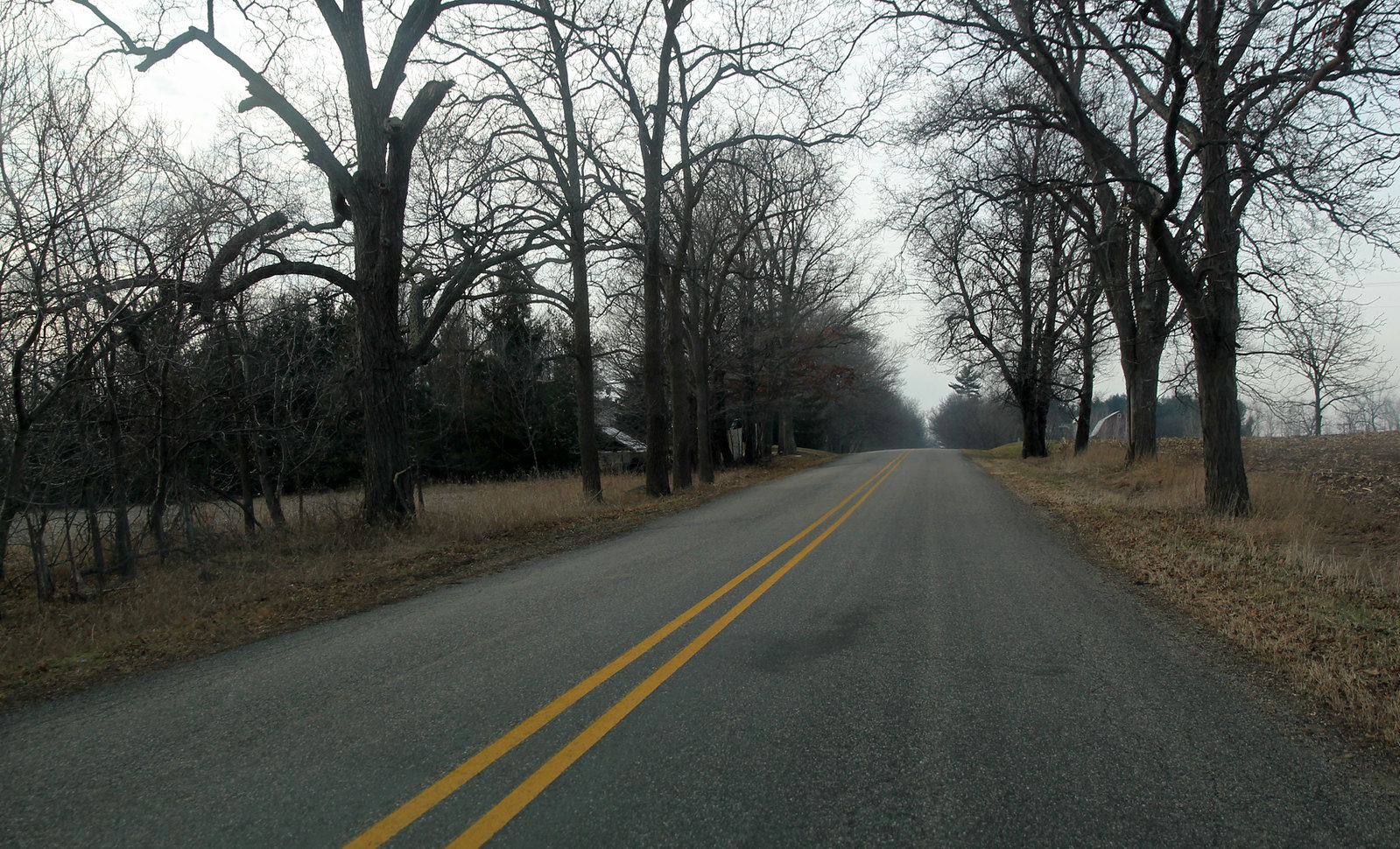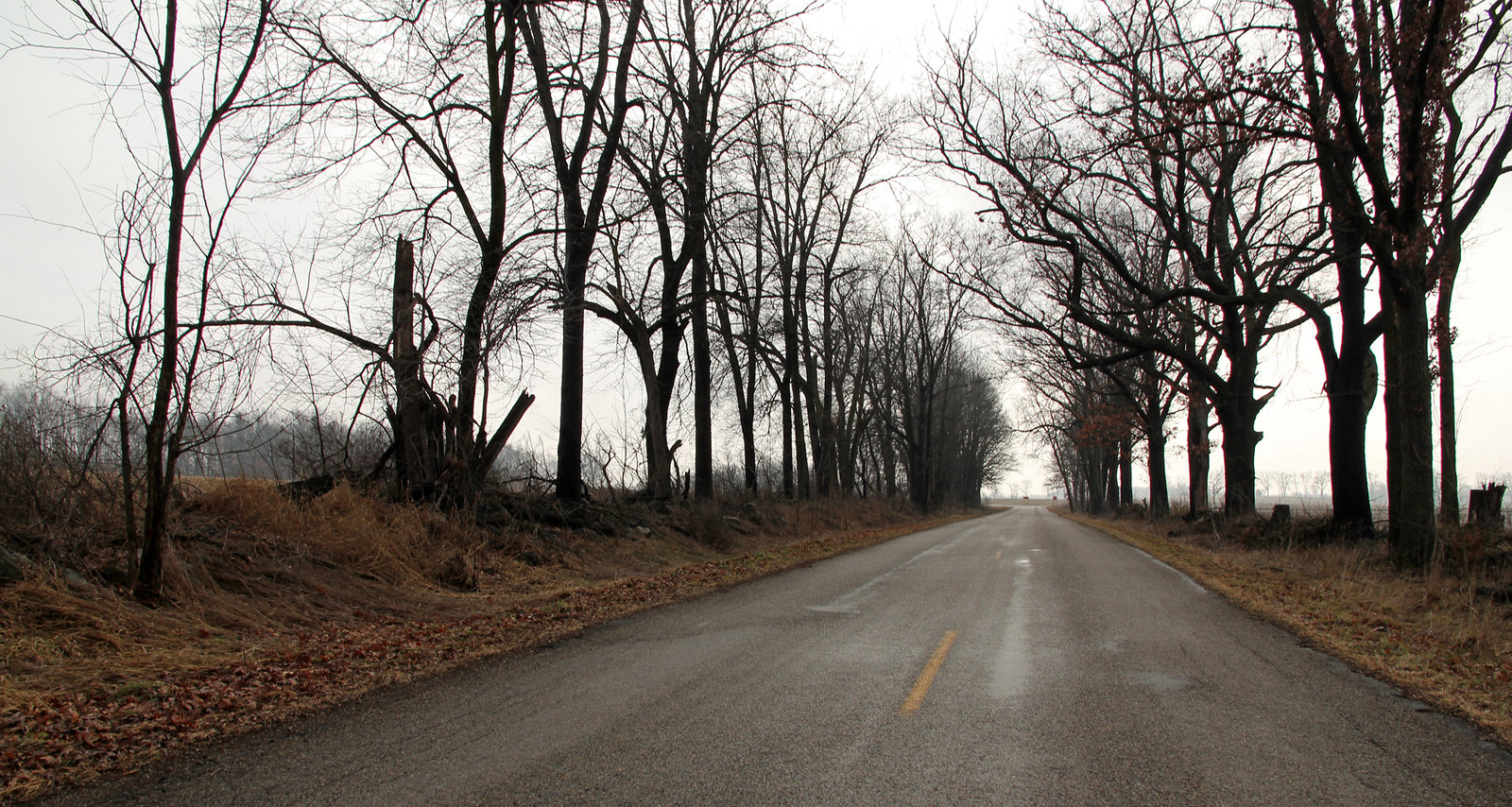Every locale is defined by its architecture and landscape, and every landscape is a composite of artificial and natural features. (1) Rocky hills and narrow valleys may distinguish a place, but so do the stone fences wrought from those hills, and the gardens dotted about those valleys. Much of the variance between regions (at least, regions similar in topography) arises from treatment of
vegetation. In eastern
Monroe County, Ohio, near the Ohio River, farms tend to occupy the ridges, with the valleys left untouched; conversely, in adjoining
Noble County, most clearings follow stream valleys, while the hilltops remain forested. In the Virginia Military District, patches of woodland are scattered in no particular order; in the Western Reserve, they lie at the
center of sections.
Throughout rural Ohio, property boundaries are often demarcated (
if they're demarcated) solely by fences, or fences overgrown with brush. Typically, roads are bordered by drainage ditches, with open fields beyond. The
hedge-lined lanes of the British Isles are all but unknown in Ohio. Southern Michigan, though, can boast quite a different landscape. Note the difference between sections of Salt Creek Township, Wayne County, Ohio, and Pulaski Township, Jackson County, Michigan (depicted below). Both districts exist within the purview of the
Public Land Survey System, and contain 640-acre sections subdivided into 160-acre quarter-sections. In Pulaski Township, though, the tracts are split by trees into even tinier plots.
 |
| Pulaski Township, Jackson County, Michigan. |
 |
| Salt Creek Township, Wayne County, Ohio. |
 |
| Greene Township, Trumbull County, Ohio. This area's farms appear to be carved from the forest. |
Like Ohio's roads, many of Michigan's thoroughfares traverse open farmland. These roads, however, are scarcely open
to that farmland; instead, rows of trees bound the roads, granting them the aspect of a tunnel. These "tree tunnels," I believe, must exist
for a reason.
 |
| Intersection of West Sterling Road and Borden Road; Scipio Township, Hillsdale County, Michigan. |
 |
| Hanover Road, looking west from its convergence with Luttenton Road; Hanover Township, Jackson County, Michigan. |
 |
| East Reading Road (near South Lake Pleasant Road); Jefferson Township, Hillsdale County, Michigan. |
 |
| Anderson Road, looking toward Jonesville Road; Litchfield Township, Hillsdale County, Michigan. |
The Michigan counties and townships where tree-lined roads preponderate were, with few exceptions, settled by natives of New York state. The "tree tunnel," then, may be a creation favored by New Yorkers; but the state of New York (if my
StreetView jaunts are any indication) contains few such features. "Tree tunnels" may function as windbreaks, or, perhaps, they exist for purely aesthetic purposes.
I searched the ever-useful
Google Books database for literary references to Michigan's tree-bordered roads, and found a few. A 1906
report by the Michigan Forestry Commission laments the state's being "prey to the winds that come from the ice fields of the north," and
recommends planting trees to shield crops from those winds. A lengthy article about the subject — titled "
Roadside Trees Big Asset of Michigan," and written by one Linus Palmer — appeared in the February 23, 1922 edition of
Michigan Roads and Forests:
One of the most valuable assets to the public highways of Michigan are the roadside trees. In a system of highways as extensive as is found in this state, every conceivable type of roadside is found, varying from the heavily wooded type to the practically barren, and between these two extremes are found many roads with rows of beautiful trees, resembling a city street.
. . .
The people of the state are beginning to realize the real value of roadside trees, and are becoming more and more interested in the preservation and care of what trees we have, and in the planting of more trees along our public highways.
Alas, Palmer's piece is less applicable than its title suggests. Whether the wooded roads remaining in southern Michigan predate Palmer's time, or are merely legacies of the increased interest he describes, I cannot say. In any case, the "windbreak" hypothesis seems most likely (and, in fact, would explain the curious subdivision of farms into yet smaller tracts).
1) I detest using "artificial" and "natural" in this way — setting the manmade in opposition to what exists independent of him — but our language contains no alternative.







